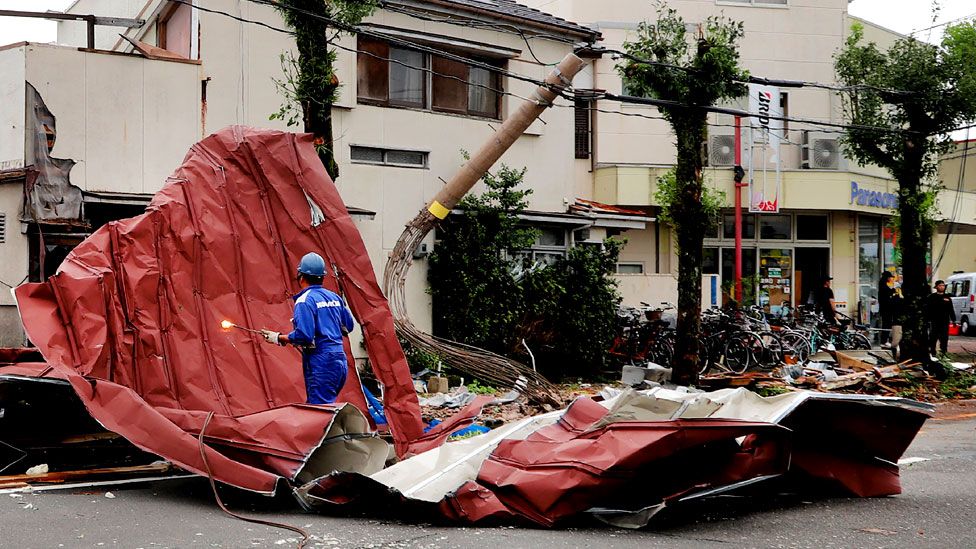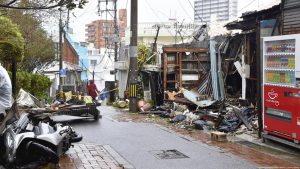Millions told to evacuate as typhoon batters Japan
2 min read
Millions Evacuate as Devastating Typhoon Hits Japan

Millions Evacuate as Devastating Typhoon Hits Japan
Japan has issued its highest-level alert to over five million residents following one of the most powerful typhoons to strike the nation in decades. Typhoon Shanshan has caused significant damage since making landfall in the southwestern part of the country.
At least four people have been reported dead and over 90 injured due to the storm, with hundreds of thousands left without electricity. The level-five alert, which was issued for parts of the southern island of Kyushu, urges residents to either relocate to safer areas or seek higher ground in their homes. In other regions, evacuation has been recommended.
After hitting land, the typhoon weakened to a severe tropical storm but continues to move northeast, unleashing heavy rainfall and severe disruptions to transportation. Shanshan made landfall in Kagoshima Prefecture at approximately 08:00 local time on Thursday (23:00 GMT Wednesday), according to the Japan Meteorological Agency (JMA).
The storm has left a path of devastation, with damaged buildings, shattered windows from debris, uprooted trees, and overturned vehicles.
Earlier on Tuesday, a landslide triggered by the approaching storm killed three members of the same family—a couple in their 70s and a man in his 30s—in central Japan. Their home in Gamagori was swept away, while two other female relatives were rescued. On Thursday, an 80-year-old man from Tokushima Prefecture was confirmed dead after being trapped when his house’s roof collapsed around 17:30 local time (08:30 GMT). Despite rescue efforts, he later died in the hospital. The JMA recorded 110 mm of rainfall in the area at the time of the incident.
The JMA has issued a rare “special warning” for extreme storms, highlighting the risks of landslides, flooding, and extensive damage. Winds of up to 252 km/h (157 mph) have been reported on Kyushu.
While most evacuation orders are concentrated in the southern island, some have also been issued for central Japan. Online videos depict large trees swaying, tiles being blown off roofs, and debris being tossed into the air as the island endures heavy rains.
Major automakers such as Toyota and Nissan have temporarily shut down their factories due to safety concerns and potential supply chain disruptions caused by the storm.

Hundreds of flights have been canceled, and several high-speed train services have been suspended. The JMA anticipates that the storm will traverse Japan over the weekend before reaching Tokyo.
Special typhoon warnings, like the one issued for Shanshan, are reserved for exceptionally powerful storms. This warning was also given for Typhoon Nanmadol in September 2022, marking the first such alert for Kyushu rather than Okinawa.
Shanshan follows Typhoon Ampil earlier this month, which, despite causing only minor injuries and damage, still led to widespread flight and train disruptions. Prior to that, Tropical Storm Maria brought record rainfall to northern parts of Japan.
Recent studies indicate that typhoons are forming closer to coastlines, intensifying more rapidly, and persisting longer over land due to climate change.